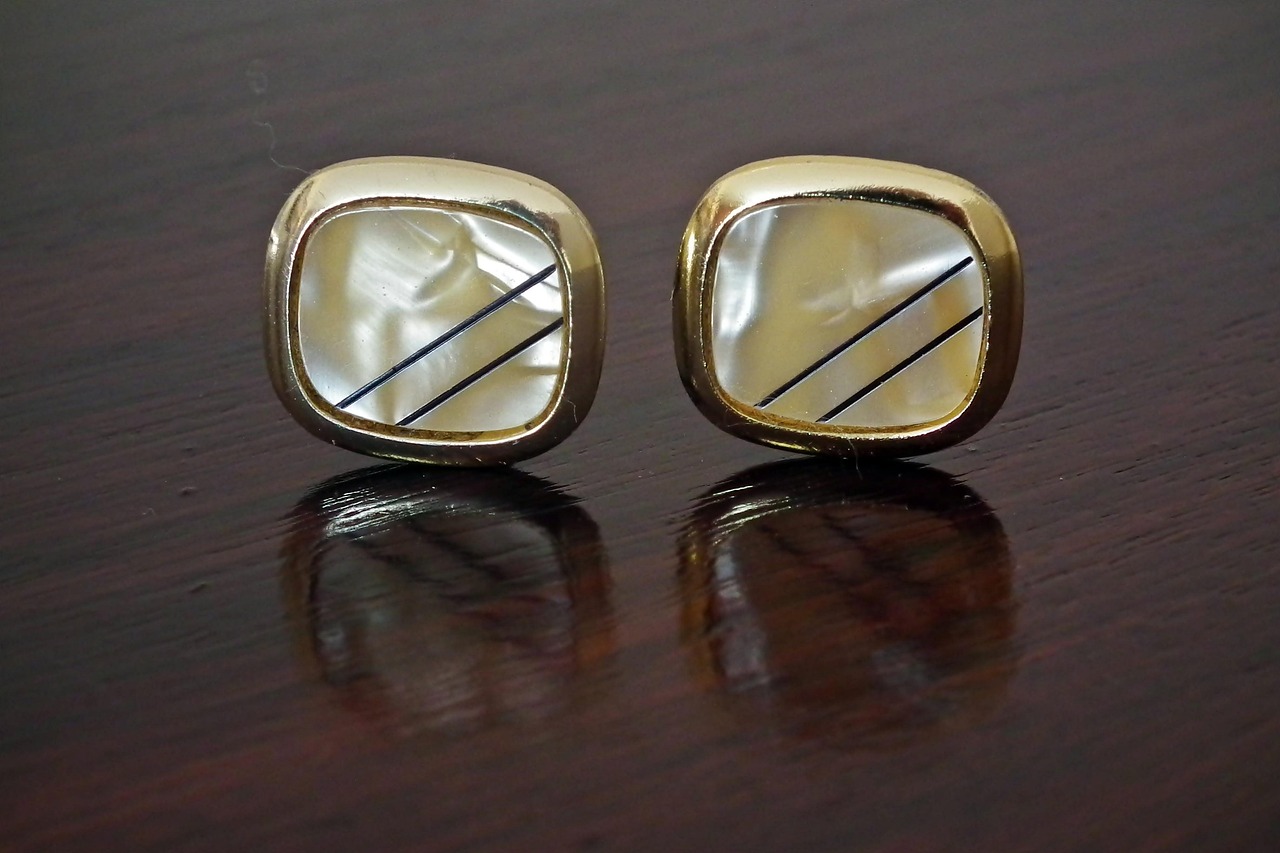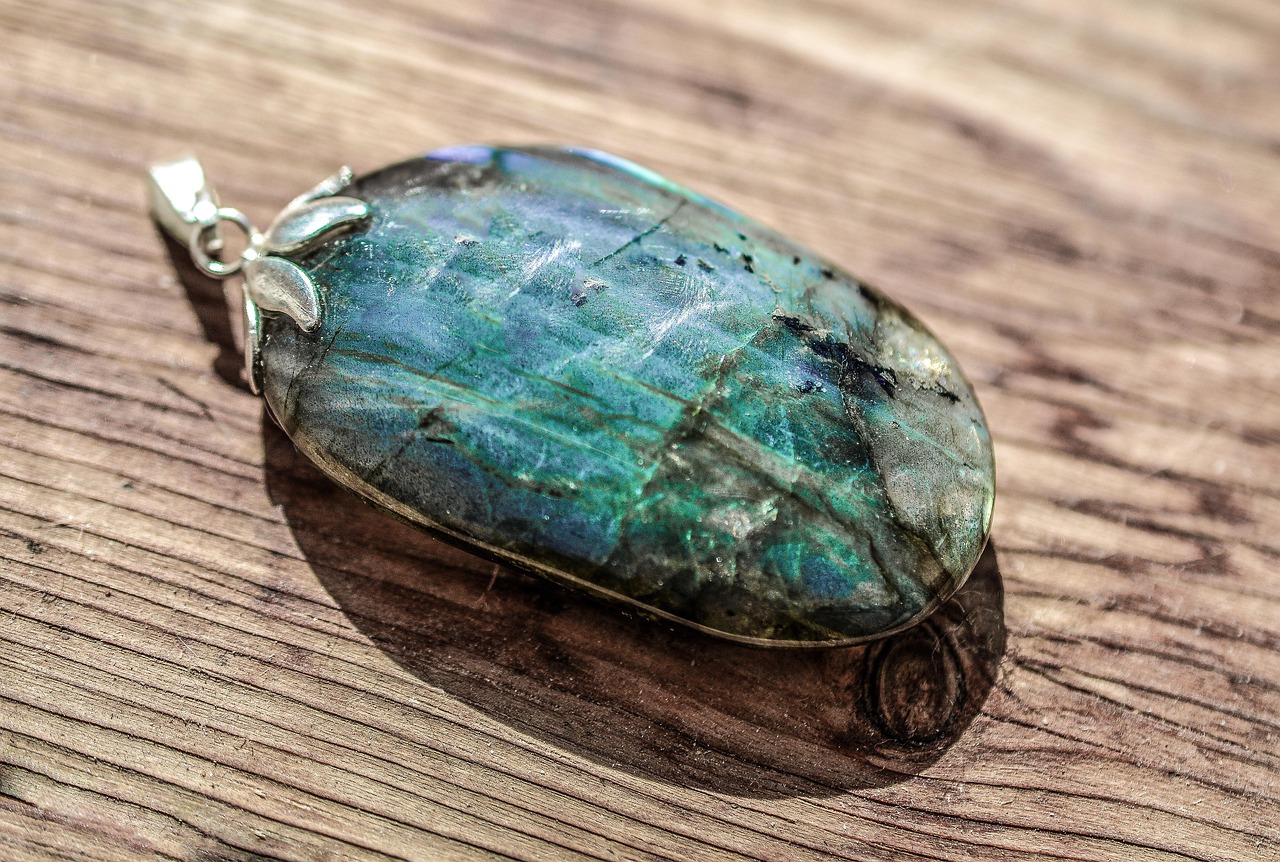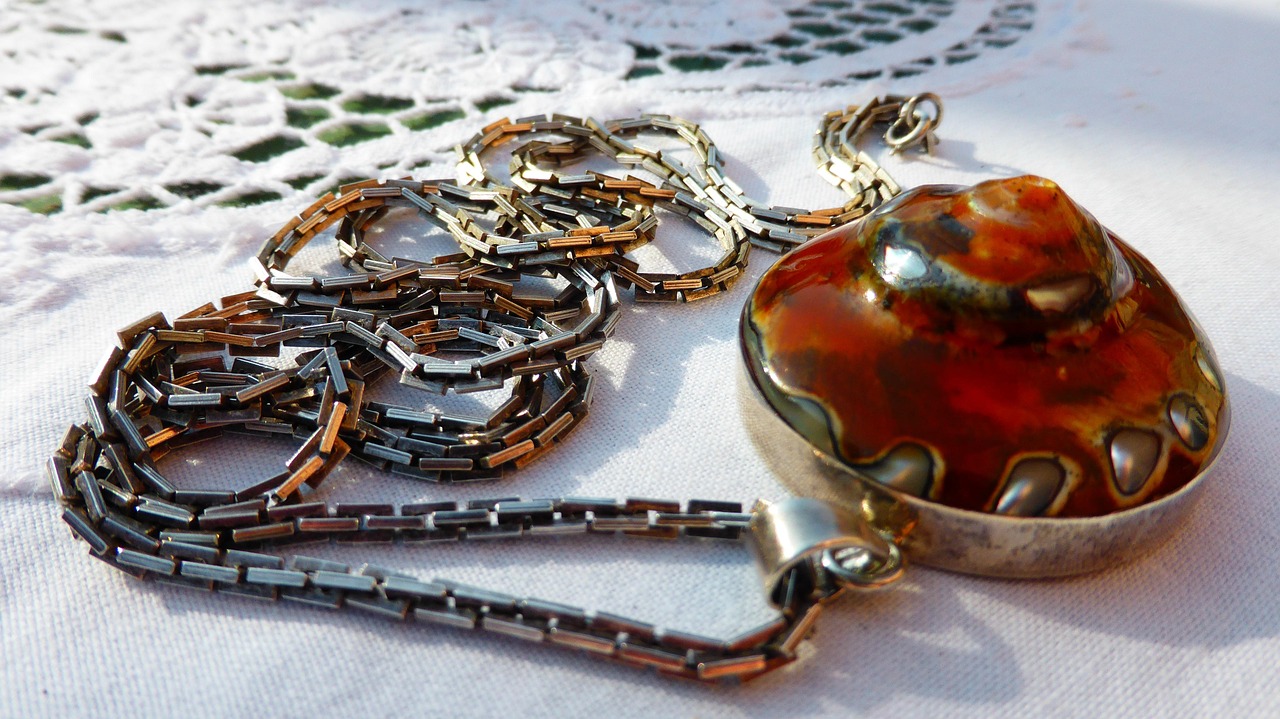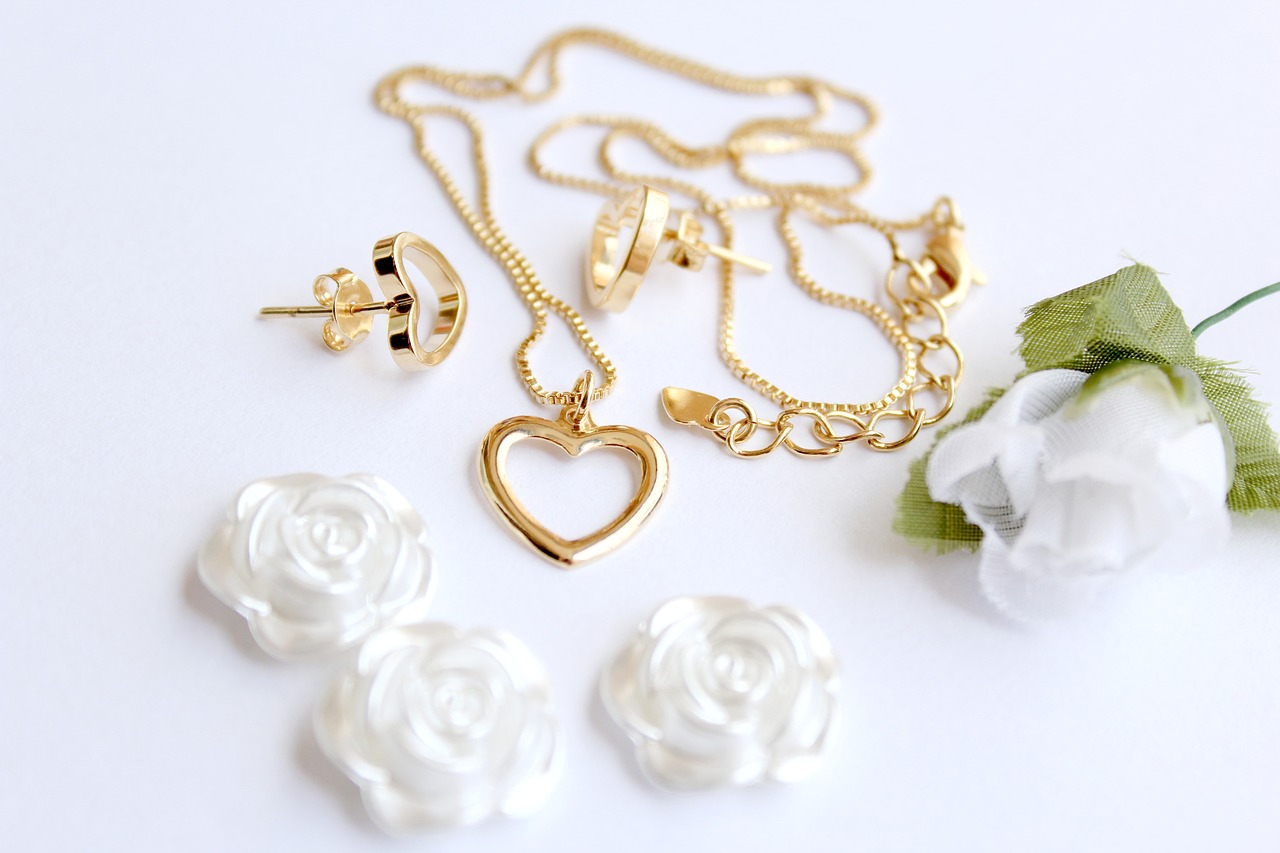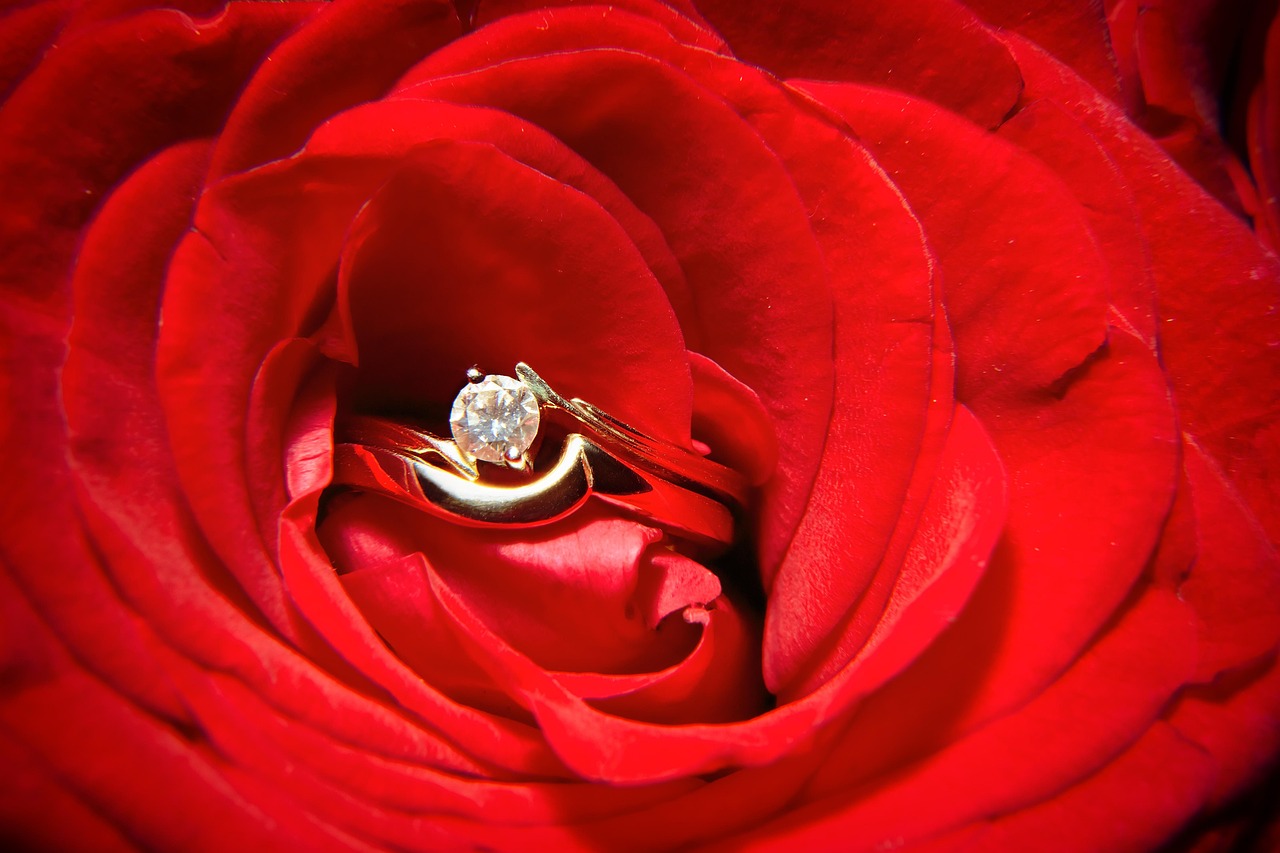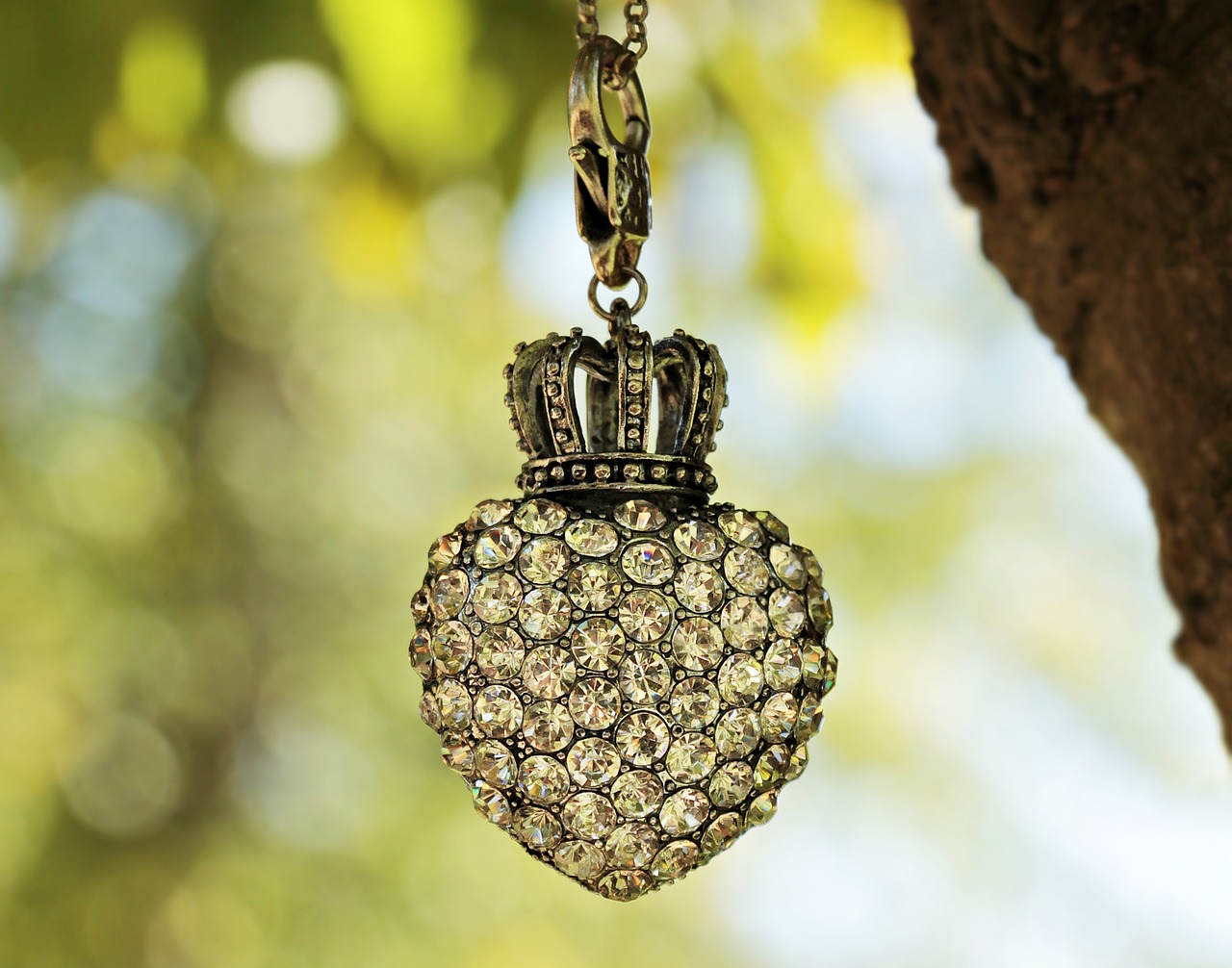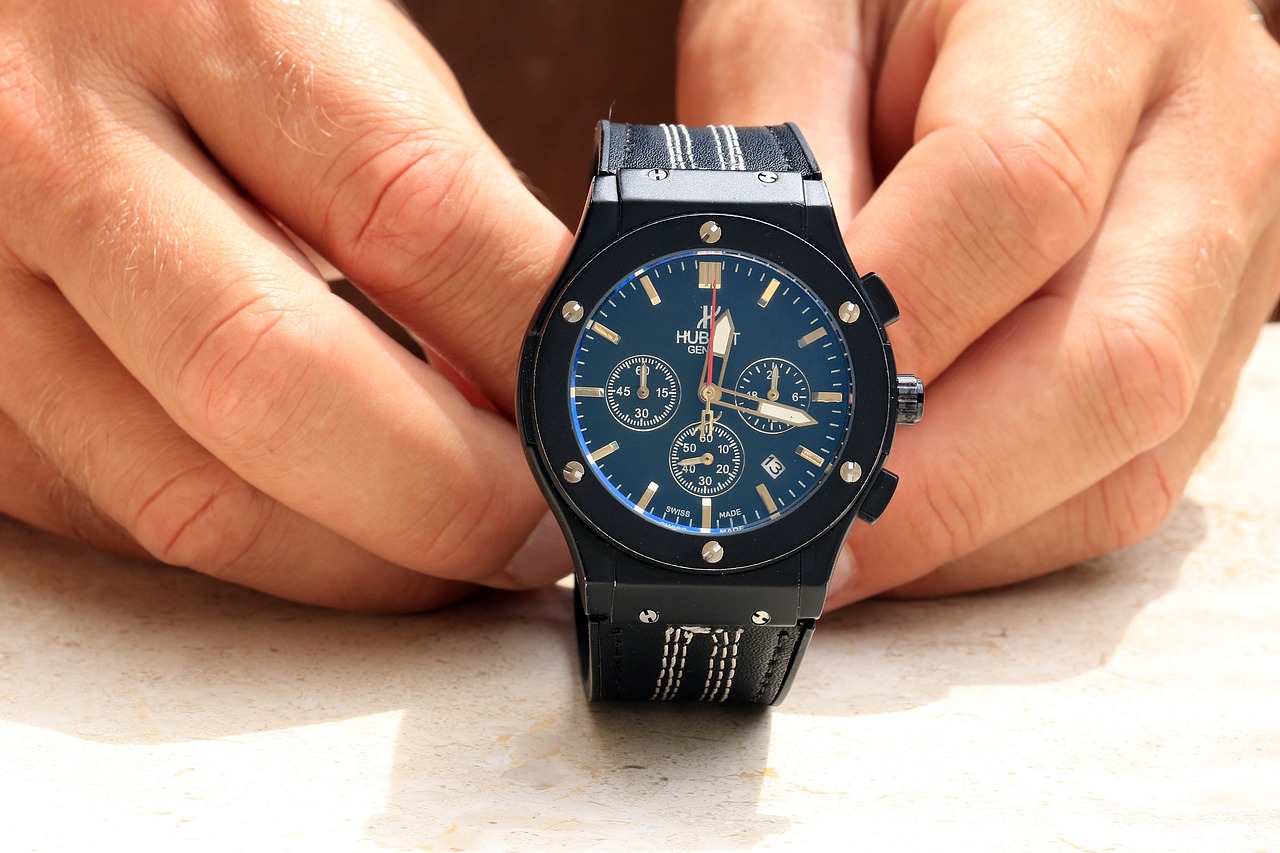This article provides a comprehensive guide on selling jewelry at auction, covering essential tips, strategies, and insights to ensure a successful sale. Selling jewelry at auction can be an exciting and profitable venture, allowing you to reach a broader audience and potentially achieve higher prices than through traditional selling methods.
One of the primary reasons to sell jewelry at auction is the access to a diverse buyer pool. Unlike selling through a local jeweler or online marketplace, auctions attract collectors and enthusiasts who are specifically looking for unique pieces. This can drive up competition and, consequently, the final sale price.
Understanding the types of jewelry that attract buyers can significantly impact your selling strategy. The following categories are highly sought after:
- Vintage and Antique Jewelry: Pieces that are rare and have historical significance often command high prices.
- Contemporary Designer Jewelry: Well-known brands can attract luxury buyers willing to bid high.
- Unique Handmade Items: One-of-a-kind pieces can create a buzz and attract attention.
Preparation is key to a successful auction. Here are some essential steps:
- Cleaning and Restoration: Ensure your jewelry is in pristine condition. A professional cleaning can enhance its appeal.
- Appraisal: Get an accurate appraisal from a qualified expert to understand its value and set realistic expectations.
- Documentation: Keep records of any certifications, appraisals, or historical information that can add value.
Selecting an appropriate auction house is crucial. Consider the following:
- Reputation: Research auction houses known for selling jewelry effectively.
- Commission Rates: Understand the fees involved to avoid surprises.
- Expertise: Ensure the auction house has a good track record in jewelry sales.
Pricing your jewelry correctly is vital. Factors to consider include:
- Reserve Prices: Set a minimum price to protect against selling too low.
- Market Trends: Stay informed about current trends to price your items competitively.
Effective marketing can significantly impact your auction success. Consider these strategies:
- Social Media Promotion: Use platforms like Instagram and Facebook to showcase your pieces.
- Compelling Descriptions: Craft engaging descriptions that highlight the unique aspects of your jewelry.
Being prepared for auction day can reduce stress. Key points to remember include:
- Registration: Familiarize yourself with the registration process to ensure a smooth experience.
- Bidding Procedures: Understand how bidding works to maximize your chances of a successful sale.
Avoiding common pitfalls can enhance your selling experience:
- Underestimating Value: Ensure you understand your jewelry’s worth to avoid significant losses.
- Neglecting Research: Failing to research auction houses can lead to poor outcomes.
By following these guidelines, you can navigate the auction process with confidence and increase your chances of achieving a successful sale. Remember, preparation and knowledge are your best allies in the auction world.

Why Consider Selling Jewelry at Auction?
Selling jewelry at auction has become an increasingly popular choice for many individuals looking to maximize their returns. This method not only opens the door to a broader audience but also offers the potential for higher prices compared to traditional selling avenues like pawn shops or personal sales. In this section, we will explore the compelling reasons why selling jewelry at auction can be a beneficial decision.
- Wider Audience Reach: Auctions attract a diverse group of buyers, including collectors, dealers, and enthusiasts from various backgrounds. This extensive reach can lead to competitive bidding, which often results in higher final sale prices.
- Expert Marketing: Auction houses typically have established marketing strategies that promote their sales events. This professional exposure can enhance the visibility of your jewelry, drawing in more potential buyers.
- Competitive Bidding: The auction format encourages bidders to compete against one another, which can drive up the price of your items. This competitive atmosphere can result in prices that exceed your initial expectations.
- Transparency: Auctions provide a transparent selling process. You can observe the bidding in real-time, ensuring that you are aware of how much your jewelry is worth in the current market.
- Access to Expert Appraisals: Most auction houses offer appraisal services, which can help you understand the value of your jewelry. This insight is invaluable for setting realistic expectations and reserve prices.
While anyone can sell jewelry at auction, certain groups may find it particularly advantageous:
- Collectors: Those with rare or unique pieces often find that auctions are the best way to reach buyers who appreciate their value.
- Estate Executors: Executors managing estates often turn to auctions to liquidate assets efficiently and fairly.
- Individuals with Vintage Items: Vintage and antique jewelry can command high prices at auction, making it a lucrative option for sellers.
Preparation is key to a successful auction experience. Here are some essential steps:
- Research Auction Houses: Not all auction houses are created equal. Look for those with a strong reputation in jewelry sales and positive reviews from previous sellers.
- Get Your Jewelry Appraised: A professional appraisal will provide you with an accurate valuation, ensuring that you set a realistic reserve price.
- Clean and Present Your Jewelry: First impressions matter. Having your jewelry professionally cleaned can enhance its appearance and attract more bidders.
On the day of the auction, understanding the process can alleviate stress:
- Registration: Make sure to register early and understand the bidding process, including how to place bids and what to do if you are bidding online.
- Monitoring Bids: Keep an eye on how your jewelry is performing in the auction. This will help you gauge interest and potential final prices.
In summary, selling jewelry at auction can be a rewarding experience, offering numerous advantages over traditional selling methods. By understanding the benefits, preparing adequately, and knowing what to expect, you can navigate the auction process with confidence and potentially achieve remarkable returns on your jewelry investment.

What Types of Jewelry Sell Best at Auction?
When it comes to selling jewelry at auction, understanding which types of jewelry attract buyers is crucial for maximizing your profits. The auction environment can be competitive, and knowing the right pieces to present can significantly influence your success. This section will explore the various categories of jewelry that tend to perform well, helping you make informed decisions about your auction inventory.
The appeal of jewelry at auction often hinges on several factors, including rarity, brand recognition, and historical significance. Buyers are typically drawn to pieces that tell a story or have a unique provenance. Understanding these elements can help you choose the right pieces for auction.
Vintage and antique jewelry often commands high prices due to its unique craftsmanship and historical context. Collectors are particularly interested in:
- Art Deco pieces, known for their geometric designs and bold colors.
- Victorian jewelry, which often features intricate detailing and symbolism.
- Edwardian items, recognized for their delicate, lace-like designs.
These categories not only attract collectors but also tend to appreciate in value over time, making them excellent auction candidates.
Items from renowned designers like Tiffany & Co., Cartier, and Van Cleef & Arpels are highly sought after. Buyers are often willing to pay a premium for:
- Limited edition pieces that offer exclusivity.
- Signature designs that are easily recognizable.
- High-quality materials such as diamonds, gold, and platinum.
These factors contribute to the desirability of contemporary designer jewelry, making it a strong contender in auctions.
While not all costume jewelry sells for high prices, certain brands and styles can attract significant interest. Collectors often seek:
- Pieces from famous designers like Chanel or Yves Saint Laurent.
- Vintage costume jewelry that showcases unique materials and designs.
Costume jewelry can be a more affordable option for buyers, making it accessible to a wider audience.
Staying informed about current market trends can help you identify the best times to sell specific types of jewelry. For instance, certain styles may gain popularity due to fashion trends or celebrity endorsements, making them more desirable at auction.
In summary, knowing what types of jewelry sell best at auction can empower you to make strategic decisions about your inventory. Whether it’s vintage pieces, designer items, or unique costume jewelry, understanding the market and buyer preferences will help you achieve optimal results.
Vintage and Antique Jewelry
holds a unique allure for collectors and enthusiasts alike. These pieces often carry a sense of history and craftsmanship that modern jewelry simply cannot replicate. The rarity and historical significance of these items frequently lead to high demand, resulting in impressive auction prices.
The value of vintage and antique jewelry is influenced by several factors. Rarity is paramount; pieces that are one-of-a-kind or from limited production runs tend to fetch the highest prices. Additionally, the historical significance of a piece, such as its connection to a particular era or event, can greatly enhance its desirability. Collectors often seek items that tell a story or embody the aesthetics of a specific time period.
To successfully sell vintage and antique jewelry, it is crucial to identify authentic pieces. This involves:
- Understanding Design Styles: Different eras have distinct styles, such as Art Deco or Victorian, which can help in identifying authenticity.
- Recognizing Maker Marks: Many pieces will have marks that indicate the manufacturer, which can provide insights into the piece’s origin and value.
- Examining Materials: Knowing the materials used in different periods (such as gold purity or gemstone types) can significantly affect valuation.
Staying updated on market trends is essential for maximizing the sale potential of antique jewelry. Currently, there is a growing interest in pieces that reflect sustainability and craftsmanship. Buyers are increasingly drawn to items that are not only beautiful but also carry a story of their creation and history.
Choosing the right platform to sell vintage and antique jewelry is vital. Auction houses that specialize in antique items often attract serious collectors, increasing the likelihood of a successful sale. Online platforms also offer a vast audience, but it’s essential to select reputable sites that cater to jewelry enthusiasts.
Effective marketing strategies can significantly enhance the visibility of your jewelry. Consider the following:
- Professional Photography: High-quality images that showcase the details and craftsmanship of the pieces can attract more bidders.
- Storytelling: Share the history and provenance of the jewelry in your listings to engage potential buyers emotionally.
- Social Media Promotion: Utilize platforms like Instagram and Pinterest to showcase your pieces and reach a broader audience.
Knowing what to expect during the auction process can help you navigate the experience with confidence. Familiarize yourself with:
- Registration Requirements: Ensure you understand the registration process for both sellers and bidders.
- Bidding Procedures: Know how bidding works, including the role of reserve prices and bidding increments.
- Payment and Fees: Be aware of the auction house’s payment timeline and any associated fees to avoid surprises.
In summary, the world of vintage and antique jewelry is rich with opportunity for those willing to invest the time to understand its nuances. By recognizing the value of these pieces and effectively marketing them, you can tap into a lucrative market that appreciates the beauty and history these items represent.
Identifying Authentic Vintage Pieces
Identifying authentic vintage jewelry is a nuanced process that requires a keen eye and a thorough understanding of various factors that contribute to a piece’s authenticity and value. This guide will delve into the essential elements to consider when evaluating vintage jewelry, ensuring that collectors and enthusiasts can make informed decisions.
One of the first steps in recognizing authentic vintage jewelry is to familiarize yourself with the design styles that were popular during different historical periods. For instance:
- Art Deco (1920s-1930s): Characterized by geometric shapes, bold colors, and intricate detailing.
- Victorian (1837-1901): Often features romantic motifs, such as hearts and flowers, with elaborate craftsmanship.
- Mid-Century Modern (1940s-1960s): Known for its sleek lines and minimalist aesthetic.
Recognizing these styles not only helps in identifying authenticity but also in understanding the cultural context behind each piece.
Another critical aspect of identifying vintage jewelry is examining maker marks. These marks can provide valuable information about the jewelry’s origin, including the designer or manufacturer. Look for:
- Hallmarks: These are stamps that indicate the metal content and often include the manufacturer’s logo.
- Signature Styles: Many renowned designers have distinctive styles or marks that can authenticate a piece.
Researching these marks can significantly enhance your knowledge and confidence when evaluating vintage jewelry.
The materials used in vintage jewelry can greatly affect its value. Understanding the common materials associated with specific eras is crucial. For example:
- Gold and Platinum: Often used in high-quality pieces, these metals indicate durability and value.
- Gemstones: Vintage jewelry frequently features natural stones, such as sapphires, rubies, and emeralds, which are more valuable than synthetic alternatives.
- Enamel and Bakelite: Popular in the 20th century, these materials can also signify a piece’s vintage status.
By assessing the materials, you can better gauge the authenticity and potential market value of a piece.
Authentic vintage jewelry often shows signs of wear that reflect its age. Look for:
- Patina: A natural tarnish that develops over time, particularly on metals like silver.
- Repair Marks: Evidence of previous repairs can indicate the jewelry’s history and authenticity.
While some wear can enhance a piece’s charm, excessive damage may detract from its value.
When in doubt, consulting with experts can provide invaluable insights. Consider:
- Appraisers: Professional appraisers can offer detailed evaluations based on their expertise.
- Antique Dealers: Established dealers often have extensive knowledge about vintage jewelry and can guide you in your search.
Additionally, utilizing online resources and databases can help you cross-reference information and verify authenticity.
In conclusion, identifying authentic vintage jewelry is a multifaceted process that involves understanding design styles, examining maker marks, assessing materials, recognizing signs of wear, and consulting experts. By honing these skills, collectors can confidently navigate the world of vintage jewelry, ensuring that they appreciate and invest in genuine pieces that hold both historical and monetary value.
Market Trends for Antique Jewelry
Understanding market trends for antique jewelry is crucial for anyone looking to sell these precious items. The antique jewelry market is influenced by various factors, including consumer demand, economic conditions, and the evolving tastes of collectors. By staying informed about these trends, sellers can strategically time their sales to maximize profits.
Keeping an eye on market trends allows sellers to identify the optimal time to sell their antique jewelry. Trends can fluctuate based on seasonal demand, economic factors, and even cultural shifts. For instance, during times of economic prosperity, buyers may be more willing to invest in luxury items, including antique jewelry. Conversely, during economic downturns, demand may wane.
- Rarity: Unique pieces with historical significance often command higher prices.
- Condition: Well-preserved items tend to attract more interest and higher bids.
- Provenance: Jewelry with a notable history or previous ownership can significantly increase its value.
- Market Sentiment: Trends can be influenced by celebrity endorsements or popular culture, affecting buyer interest.
Several trends are shaping the antique jewelry market today:
1. **Sustainable Fashion**: Many consumers are gravitating towards vintage and antique pieces as part of a broader movement towards sustainable fashion.2. **Personalization**: Customized antique jewelry is gaining popularity, with buyers seeking unique items that tell a story.3. **Investment Value**: Antique jewelry is increasingly seen as a viable investment, attracting buyers looking to diversify their portfolios.
To effectively analyze market trends, consider the following methods:
- Research Auction Results: Review past auction results to gauge which pieces are selling well and at what prices.
- Follow Industry News: Subscribe to jewelry trade publications and online forums to stay updated on market shifts.
- Engage with Experts: Consult with appraisers and auction houses to gain insights into current market conditions.
Timing your sale can significantly impact your profits. Generally, the best times to sell include:
- Seasonal Peaks: The holiday season often sees increased buyer activity.
- Market Highs: Selling during periods of increased market demand can lead to better prices.
- After Major Events: Events such as exhibitions or auctions can spark renewed interest in antique jewelry.
In conclusion, keeping abreast of current market trends is essential for anyone looking to sell antique jewelry. By understanding the factors that influence prices and recognizing the best times to sell, you can maximize your potential profits. Whether you are a seasoned collector or a first-time seller, leveraging these insights will help you navigate the antique jewelry market with confidence.
Contemporary Designer Jewelry
When it comes to the world of auctions, has carved out a niche that appeals to both seasoned collectors and newcomers alike. This type of jewelry, often created by renowned brands, is not only a testament to artistry but also an investment opportunity that can yield impressive returns. The allure of luxury and exclusivity associated with these pieces makes them highly sought after, leading to high bids at auctions.
One of the primary reasons buyers flock to auctions for contemporary designer jewelry is the unique combination of craftsmanship and brand prestige. Well-known designers often create limited-edition pieces, which heightens their value and desirability. Additionally, the thrill of bidding in a live auction creates a sense of urgency and excitement that can drive prices up significantly.
- Brand Recognition: Established brands like Tiffany & Co., Cartier, and Chanel have a loyal following, which boosts bidding competition.
- Quality and Craftsmanship: The superior materials and meticulous attention to detail often found in designer pieces enhance their appeal.
- Limited Editions: Many designers release pieces in limited quantities, making them rare and highly coveted.
Understanding the value of contemporary designer jewelry involves recognizing key elements that contribute to its worth. This includes:
- Provenance: The history of ownership can significantly affect value. Pieces with a notable previous owner or a unique story tend to attract more attention.
- Condition: Jewelry that is well-maintained and free from damage will fetch higher bids.
- Documentation: Original receipts, certificates of authenticity, and packaging can enhance a piece’s value.
Staying informed about current market trends is crucial for sellers. For instance, certain styles or designers may experience surges in popularity due to celebrity endorsements or fashion trends. Following auction results and industry news can provide insights into which pieces are currently in demand.
To maximize the potential sale price, proper preparation of your jewelry is essential. This includes:
- Professional Cleaning: A thorough cleaning can restore the luster of your jewelry, making it more appealing to bidders.
- Appraisal: Obtaining a professional appraisal can help you understand the market value and set realistic expectations.
- High-Quality Photography: Capturing the beauty of your jewelry through stunning photographs can attract more interest during the auction.
Effective marketing strategies can significantly enhance the visibility of your jewelry at auction. Utilize social media platforms to showcase your pieces and engage with potential buyers. Create compelling descriptions that highlight the unique features and craftsmanship of each item, drawing in bidders who appreciate quality and exclusivity.
Familiarizing yourself with the auction process can help you navigate the day confidently. Understanding registration procedures, bidding strategies, and post-auction expectations will prepare you for a successful selling experience.
In summary, offers a unique opportunity for both buyers and sellers in the auction market. By understanding the factors that contribute to its value and preparing effectively, you can maximize your chances of achieving a successful sale.
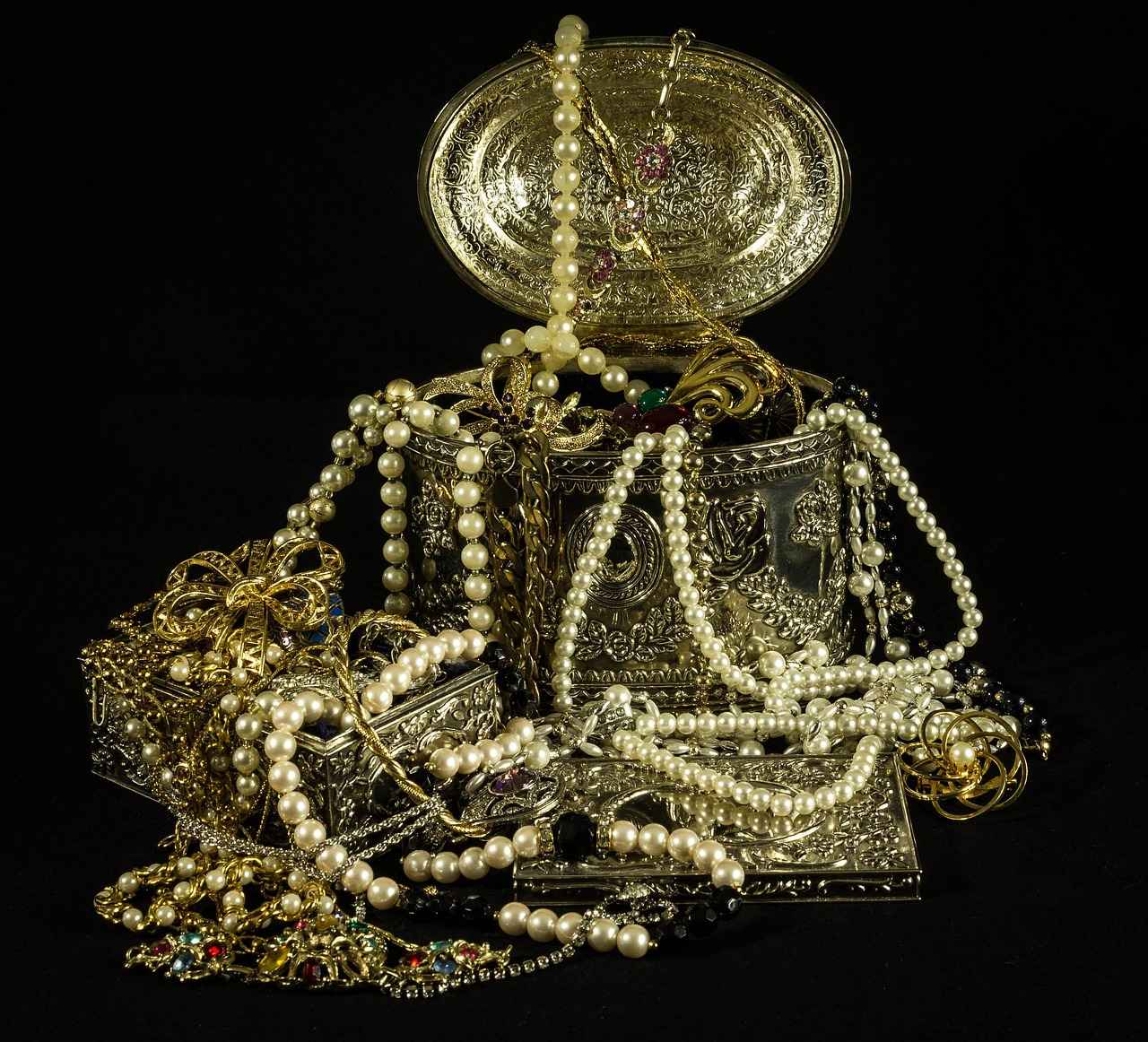
How to Prepare Your Jewelry for Auction
Preparing your jewelry for auction is not just a task; it is a critical step that can significantly influence the outcome of your sale. Proper preparation involves multiple facets, including cleaning, appraising, and documenting your pieces to enhance their appeal to potential buyers. This guide will explore each of these elements in detail, ensuring you are well-equipped to maximize your jewelry’s value at auction.
First impressions matter, especially in the world of auctions. Cleaning your jewelry can dramatically enhance its appearance, making it more attractive to bidders. A thorough cleaning removes dirt, oils, and tarnish, allowing the inherent beauty of the piece to shine through. Consider seeking professional cleaning services, as they can provide gentle yet effective methods that preserve the integrity of your jewelry.
Next, obtaining an accurate appraisal from a qualified expert is essential. An appraisal not only provides a realistic valuation of your jewelry but also helps you set appropriate reserve prices and expectations for the auction. Make sure to choose an appraiser with a solid reputation and experience in evaluating jewelry similar to yours. This step ensures you are aware of the true market value of your pieces.
Documentation plays a crucial role in the auction process. Having detailed records of your jewelry, including purchase receipts, appraisals, and any relevant certificates (such as those for gemstones), can significantly enhance buyer confidence. This information not only verifies authenticity but also provides potential buyers with a sense of security regarding their investment.
When preparing for auction, it’s vital to create compelling listings that attract potential buyers. Take high-quality photographs from multiple angles, highlighting unique features and any flaws. Accompany these images with well-crafted descriptions that tell the story of each piece, its history, and its unique characteristics. Engaging narratives can captivate bidders and encourage higher bids.
Lastly, staying informed about current market trends can significantly influence your auction strategy. Research the types of jewelry that are currently in demand and adjust your preparations accordingly. This knowledge can guide you in selecting the right pieces to auction and help you set realistic expectations for their sale.
In summary, proper preparation is essential for a successful auction. By focusing on cleaning, obtaining accurate appraisals, documenting your jewelry, creating compelling listings, and understanding market trends, you can enhance the appeal of your jewelry to potential buyers and maximize your auction results.
Cleaning and Restoring Your Jewelry
When it comes to selling jewelry at auction, presentation is key. One of the most effective ways to enhance the appeal of your pieces is through professional cleaning and restoration. This process not only revitalizes the appearance of your jewelry but can also significantly impact its perceived value in the eyes of potential bidders.
Why is Professional Cleaning Important? Over time, jewelry can accumulate dirt, oils, and tarnish, which can dull its shine and beauty. A professional cleaning can remove these impurities, revealing the jewelry’s true brilliance. This transformation makes the pieces more attractive to bidders, creating a positive first impression. When jewelry looks its best, it can command higher bids at auction.
How Does Cleaning Affect Value? The condition of jewelry plays a crucial role in its valuation. Clean and well-maintained pieces are often perceived as more valuable. Buyers are typically willing to pay a premium for items that appear pristine and well-cared-for. A professional cleaning can enhance the visual appeal of gemstones, metals, and settings, making them stand out in a crowded auction environment.
Types of Cleaning Services Available
- Ultrasonic Cleaning: This method uses high-frequency sound waves to create tiny bubbles that gently lift dirt and grime from intricate designs.
- Steam Cleaning: High-pressure steam is applied to jewelry to remove stubborn residues without damaging delicate components.
- Hand Cleaning: Skilled jewelers may use specialized brushes and solutions to carefully clean pieces, ensuring that no delicate parts are harmed.
Restoration: Beyond Cleaning In addition to cleaning, restoration services can help repair and rejuvenate damaged jewelry. This may include:
- Replacing Missing Stones: A missing gemstone can significantly reduce a piece’s value. Restoring it can enhance both its aesthetic and market value.
- Polishing Metal: Scratches and tarnish can detract from a piece’s beauty. Professional polishing can restore its luster.
- Re-Soldering Loose Components: Ensuring that all parts are secure is vital for both safety and appearance.
Choosing the Right Professional When selecting a jeweler for cleaning and restoration, consider their experience and reputation. Look for professionals who specialize in the type of jewelry you own, whether it be vintage, contemporary, or antique. Reviews and recommendations from previous clients can provide insight into their quality of work.
Final Thoughts Investing in professional cleaning and restoration can significantly enhance the attractiveness and value of your jewelry before auctioning. By ensuring that your pieces are in top condition, you not only improve their visual appeal but also increase their potential selling price. Remember, a well-presented piece is more likely to capture the interest of bidders, making it a worthwhile investment in your selling strategy.
Getting an Accurate Appraisal
When it comes to selling jewelry, obtaining a precise appraisal from a qualified expert is not just a step in the process; it is a critical component that can significantly influence your selling experience and outcome. An appraisal provides a realistic valuation of your jewelry, which is essential for setting appropriate reserve prices and managing your expectations throughout the auction process.
Having your jewelry appraised accurately is vital for several reasons:
- Establishing Value: A qualified appraiser will assess your jewelry based on its materials, craftsmanship, brand, and market trends. This comprehensive evaluation helps you understand its true worth.
- Setting Reserve Prices: Knowing the value of your jewelry allows you to set a reserve price that protects you from selling your pieces for less than they are worth.
- Building Trust: A documented appraisal can enhance your credibility with potential buyers. It demonstrates that you have taken the necessary steps to ensure transparency in the selling process.
During the appraisal process, expect the appraiser to conduct a thorough examination of your jewelry. Here are some key aspects they will evaluate:
- Materials: The appraiser will identify the materials used, such as gold, silver, or platinum, and assess the quality of any gemstones.
- Craftsmanship: The skill involved in creating the piece, including any unique or intricate designs, will be taken into account.
- Market Demand: Insights into current market trends can help determine how much buyers are willing to pay for similar items.
Finding a qualified appraiser is crucial. Look for professionals who hold certifications from recognized organizations, such as the American Society of Appraisers or the National Association of Jewelry Appraisers. These credentials ensure that the appraiser has undergone rigorous training and adheres to ethical standards.
Once you receive the appraisal report, you can use it to:
- Set Realistic Expectations: Understanding the value helps you gauge what to expect during the auction.
- Market Your Jewelry: Use the appraisal report to highlight the unique features and value of your pieces in your marketing materials.
- Negotiate with Auction Houses: A solid appraisal can empower you in discussions with auction houses, ensuring you secure favorable terms for your sale.
In summary, obtaining an accurate appraisal from a qualified expert is an essential step in the jewelry selling process. It not only provides a realistic valuation but also equips you with the necessary tools to navigate the auction landscape effectively. By investing time and resources into this critical phase, you can enhance your chances of achieving a successful sale and maximizing your return on investment.

Choosing the Right Auction House
When it comes to selling jewelry at auction, is a pivotal step that can greatly impact both the visibility and final sale price of your items. The auction house you select will play a crucial role in how your jewelry is presented to potential buyers, as well as the audience it attracts. Here are some essential factors to consider when making this important decision.
The auction house acts as the intermediary between you and the buyers. A reputable auction house with a strong track record can significantly enhance the visibility of your jewelry. This is particularly important given that a wider audience often equates to higher bidding activity, which can drive up the final sale price.
- Reputation: Research the auction house’s reputation in the industry. Look for reviews and testimonials from previous sellers. A house known for high-quality sales can attract serious buyers.
- Specialization: Ensure that the auction house specializes in jewelry or has a dedicated department for it. This expertise can help in valuing your pieces accurately and marketing them effectively.
- Commission Rates: Understand the commission structure. Different auction houses have varying rates, which can affect your final profit. Always clarify any hidden fees that may apply.
- Marketing Strategies: Inquire about how they plan to promote your jewelry. Effective marketing strategies, including online exposure and targeted advertising, can enhance visibility.
- Past Performance: Look at past auction results for similar items. This will give you an idea of what to expect in terms of pricing and demand.
Before committing, familiarize yourself with the auction house’s terms and conditions. This includes:
- Payment Timelines: Understand when you will receive payment after the auction concludes, as this can vary significantly between houses.
- Unsold Items: Know the policy for items that do not sell. Some auction houses may offer to re-auction them, while others may require you to pick them up.
Not every auction house will be the right fit for your specific pieces. It’s essential to consider:
- Target Audience: Does the auction house cater to the demographic that is most likely to be interested in your jewelry?
- Location: While many auctions are now online, the physical location can still matter. Some buyers prefer to see items in person before bidding.
In conclusion, selecting the right auction house is not just about finding a place to sell your jewelry; it’s about maximizing your potential returns and ensuring that your pieces are showcased to the right audience. Take the time to research and assess various auction houses to find one that aligns with your needs and goals. This strategic decision can significantly influence the overall success of your auction experience.
Factors to Consider When Selecting an Auction House
When it comes to selling your jewelry at auction, choosing the right auction house is a crucial step that can significantly impact your success. With so many options available, it is essential to evaluate several factors to ensure that you partner with an auction house that aligns with your needs and expectations.
The reputation of an auction house plays a vital role in determining the potential success of your sale. A well-established auction house with a strong track record in jewelry sales can attract serious buyers and command higher bids. Research their history, read client testimonials, and check their past auction results to gauge their standing in the industry.
Commission rates can vary significantly between auction houses. It’s important to understand the commission structure and any additional fees that may apply. Some auction houses charge a flat rate, while others may take a percentage of the sale price. Be sure to calculate how these fees will affect your overall profit, and consider negotiating rates if possible.
Not all auction houses are created equal, especially when it comes to jewelry. Look for an auction house that specializes in jewelry sales, as they will have a deeper understanding of the market and better connections with potential buyers. Their expertise can also help in accurately appraising your pieces and marketing them effectively.
Effective marketing is essential for attracting bidders. Inquire about the auction house’s marketing strategies, including how they promote their auctions and the platforms they use to reach potential buyers. A strong online presence, social media engagement, and targeted advertising can significantly enhance visibility for your jewelry.
Familiarize yourself with the auction house’s policies, including their terms and conditions, payment timelines, and procedures for unsold items. Understanding these aspects can help you avoid surprises and ensure a smoother selling experience.
Excellent customer service can make a significant difference in your selling experience. Consider how responsive and helpful the auction house staff are during your initial inquiries. A dedicated team that provides guidance and support can be invaluable throughout the auction process.
Investigate the auction house’s success rates in selling jewelry. A high success rate indicates that they effectively connect sellers with buyers, which can be a strong indicator of their ability to sell your jewelry at a favorable price.
Understanding how the auction house conducts appraisals is crucial. A reputable auction house will offer professional appraisals by qualified experts who specialize in jewelry. This ensures that your pieces are valued accurately, helping set realistic expectations for your sale.
In summary, selecting the right auction house involves careful consideration of their reputation, commission rates, expertise in jewelry sales, marketing strategies, policies, customer service, success rates, and appraisal processes. By taking the time to evaluate these factors, you can enhance your chances of achieving a successful sale and maximizing your profits.
Understanding Auction House Policies
When it comes to selling your jewelry at auction, understanding the intricacies of auction house policies is crucial. This knowledge not only helps you navigate the process but also safeguards your interests as a seller. Before you consign your precious pieces, here are some essential aspects to consider regarding auction house policies.
Auction house policies encompass the rules and regulations that govern how an auction operates. These policies can vary significantly between auction houses, making it essential for sellers to familiarize themselves with the specific terms of the house they choose. Understanding these policies can help you avoid unexpected surprises during the auction process.
Every auction house charges various fees that can impact your overall profit from the sale. These may include:
- Commission Fees: A percentage of the final sale price taken by the auction house.
- Listing Fees: Costs associated with cataloging your jewelry.
- Marketing Fees: Charges for promoting your jewelry to potential buyers.
By familiarizing yourself with these fees, you can better calculate your expected earnings and avoid any unpleasant surprises post-auction.
Understanding payment timelines is equally important. Different auction houses have varying schedules for disbursing funds after a sale. Typically, you can expect to receive payment within a few weeks after the auction concludes, but it’s essential to confirm this timeline with the auction house. Knowing when you will receive your payment allows you to manage your finances effectively and plan accordingly.
Not every piece of jewelry will find a buyer at auction. Understanding the auction house’s policy on unsold items is vital. Some houses may return the unsold items to you, while others might charge additional fees for unsold listings. Knowing these policies in advance can help you make informed decisions about your jewelry and your overall auction strategy.
Many sellers wonder if they can negotiate terms with auction houses. The answer can vary; some auction houses may be open to discussions regarding fees or terms, especially if you are a repeat client or have high-value items. Always feel free to ask about potential flexibility in their policies.
Finally, it’s prudent to review the legal aspects of the auction house’s policies. Ensure you understand the terms of the contract you sign. Look for clauses related to liability, insurance, and any rights you may have concerning the sale of your jewelry. Consulting with a legal expert can provide additional peace of mind and ensure that you are fully protected.
In summary, familiarizing yourself with the auction house’s terms and conditions, including fees and payment timelines, is essential for a smooth selling experience. By taking the time to understand these policies, you can avoid misunderstandings and make informed decisions that will benefit you in the long run.
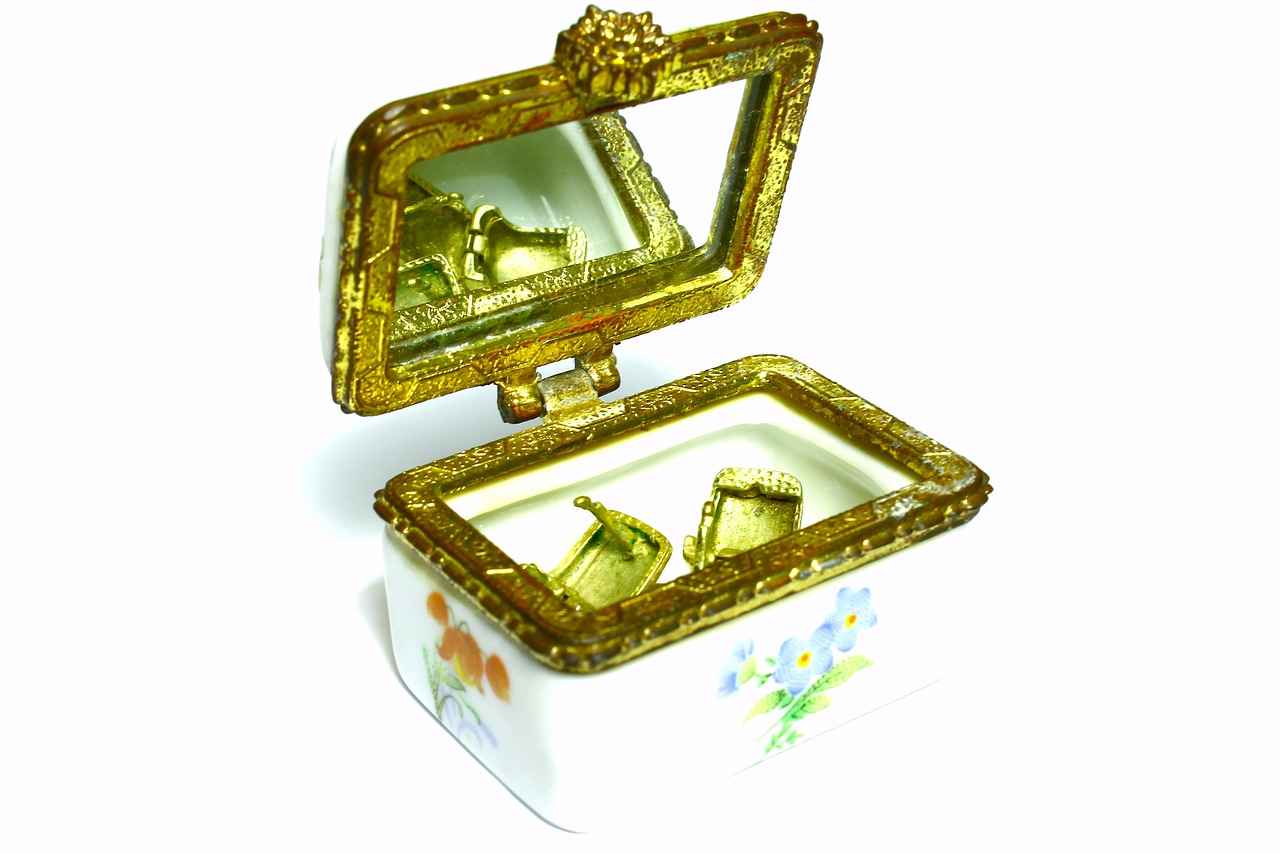
Setting the Right Price for Your Jewelry
Setting the right price for your jewelry is a critical step in the selling process. It not only attracts potential bidders but also ensures that you receive a satisfactory return on your investment. Pricing jewelry correctly involves a blend of market knowledge, understanding the unique qualities of your pieces, and strategic planning.
Correct pricing is essential for several reasons. First, it can significantly impact the level of interest your jewelry generates at auction. If priced too high, potential bidders may be deterred, while pricing too low can lead to financial losses and undervaluation of your asset. Therefore, striking the right balance is crucial.
- Market Trends: Stay informed about current trends in the jewelry market. Research recent auction results for similar items to gauge what buyers are willing to pay.
- Condition and Quality: Assess the condition of your jewelry. Items in excellent condition with high-quality materials typically command higher prices.
- Brand and Designer: Jewelry from renowned designers or brands often has a premium attached. Understanding the brand’s reputation can help you set a competitive price.
- Unique Features: Highlight any unique characteristics of your jewelry, such as rare gemstones, intricate designs, or historical significance, as these can justify a higher price point.
A reserve price is the minimum amount you are willing to accept for your jewelry. Setting a reserve price is a protective measure that ensures you do not sell your item for less than its worth. It’s essential to calculate this price carefully, considering all the factors mentioned earlier.
Encouraging bidding wars can significantly increase the final sale price of your jewelry. Here are some strategies to create excitement:
- Create Anticipation: Share teasers and sneak peeks of your jewelry on social media to build interest before the auction.
- Highlight Unique Aspects: In your auction listing, emphasize what makes your jewelry special. This can attract more bidders and potentially drive up the price.
- Engage with Potential Buyers: Be responsive to inquiries and engage with potential bidders to create a sense of community around your auction.
Consulting a professional appraiser can provide you with an accurate valuation of your jewelry. An appraiser can help you understand the market value based on current demand, materials, and craftsmanship. This knowledge is invaluable when determining your pricing strategy.
Different auction houses may have varying insights into pricing based on their experience and the clientele they attract. Collaborating with experts at your chosen auction house can provide valuable guidance on how to price your jewelry competitively while maximizing your return.
In conclusion, pricing your jewelry correctly is a multifaceted process that requires careful consideration of various factors. By understanding market trends, assessing the unique qualities of your pieces, and leveraging professional expertise, you can set a price that not only attracts bidders but also ensures a satisfactory return on your investment.
Understanding Reserve Prices
When it comes to selling jewelry at auction, one of the most critical aspects to consider is the reserve price. This is the minimum amount you are willing to accept for your jewelry, and setting it correctly can protect you from selling for too little. But how do you determine the right reserve price?
Setting a reserve price is crucial because it acts as a safety net during the auction process. Without a reserve price, your jewelry could potentially sell for much less than its worth, leading to financial losses. A well-thought-out reserve price ensures that you receive a fair return on your investment.
- Market Value: Research current market trends and comparable sales to gauge the value of your jewelry.
- Condition: The condition of your piece plays a significant role in its value. Ensure you account for any wear and tear.
- Original Purchase Price: Consider what you originally paid for the item, but remember that sentimental value does not always translate to market value.
- Appraisal Value: Obtaining a professional appraisal can provide a realistic valuation, which is essential for setting a reserve price.
Determining the right reserve price involves a combination of research and expert advice. Start by looking at similar pieces sold at auction and their final sale prices. This will give you a benchmark for what buyers are willing to pay. Additionally, consulting with an appraiser who specializes in jewelry can provide insights into the current market dynamics.
While it may be tempting to set a lower reserve price to attract more bidders, this strategy can backfire. A low reserve price may lead to a quick sale, but it could also mean losing out on potential profits. Bidders might perceive a low reserve as an indication of lower quality or value, which can deter serious buyers.
Once you have set a reserve price, it is essential to remain flexible. If you notice that there is a lack of interest in your jewelry leading up to the auction, consider adjusting the reserve price. This can help to generate more interest and encourage bidding.
In summary, setting the right reserve price is a vital step in the auction process. It protects your interests and ensures that you receive a fair return on your jewelry. By considering market trends, obtaining professional appraisals, and remaining flexible, you can set a reserve price that maximizes your chances of a successful sale.
Strategies for Bidding Wars
When it comes to selling jewelry at auction, strategies for encouraging bidding wars can be a game changer. Creating a sense of urgency and excitement around your pieces not only attracts potential buyers but can also lead to a significantly higher final selling price. Here are some effective ways to ignite the bidding frenzy.
To stimulate interest in your jewelry, it’s essential to highlight its unique attributes. Here are some strategies to consider:
- Tell a Story: Every piece of jewelry has a story. Whether it’s the history behind the design, the materials used, or the craftsmanship involved, sharing these stories can create an emotional connection with potential buyers.
- Professional Photography: High-quality images can make a significant difference. Invest in professional photography to showcase your jewelry in the best light. Close-up shots that highlight details and textures can captivate bidders.
- Limited Availability: Position your jewelry as a rare find. If applicable, mention that it’s a limited edition or one-of-a-kind piece. This can create a sense of urgency, encouraging bidders to act quickly.
Engagement is key in the auction world. Here are some methods to keep potential buyers interested:
- Social Media Buzz: Use platforms like Instagram and Facebook to generate buzz before the auction. Share sneak peeks of your jewelry, behind-the-scenes content, and countdowns to the auction day.
- Pre-Auction Events: If possible, host a pre-auction event where potential buyers can view the jewelry in person. This not only builds excitement but also allows bidders to appreciate the piece’s value firsthand.
Once the auction begins, it’s crucial to maintain momentum. Here are some tips to encourage competitive bidding:
- Start with a Low Opening Bid: Setting a low opening bid can attract more bidders. A lower price point encourages participation, increasing the chances of a bidding war as interested parties compete to win the item.
- Highlight Bidding Activity: During the auction, draw attention to the active bids. Highlighting that multiple bidders are interested can encourage others to join in, driving the price higher.
- Utilize Reserve Prices Wisely: While setting a reserve price is important to protect your investment, ensure it’s realistic. A reserve price that is too high may deter bidders, while a reasonable one can encourage more participation.
After the auction, follow up with bidders to maintain relationships for future sales. This can be beneficial for both you and the buyers, as they may be interested in future pieces you have to offer.
In conclusion, creating excitement around your jewelry and encouraging bidding wars requires a strategic approach. By telling compelling stories, engaging potential buyers, and setting the stage for competitive bidding, you can significantly increase your chances of achieving a higher final selling price. Remember, the more excitement you generate, the more likely you are to attract serious bidders who are willing to pay top dollar for your unique pieces.

Marketing Your Jewelry Before the Auction
In the competitive world of jewelry auctions, effective marketing plays a crucial role in enhancing visibility and attracting potential buyers. By implementing strategic marketing techniques, you can significantly increase the chances of a successful auction outcome.
One of the primary advantages of marketing your jewelry is the ability to reach a wider audience. When you showcase your pieces through various channels, you create opportunities for interested bidders to discover your jewelry before the auction even begins. This proactive approach can lead to heightened interest and competition, ultimately driving up the final sale price.
Utilizing social media platforms is an effective way to market your jewelry. Platforms like Instagram, Facebook, and Pinterest allow you to share high-quality images and engaging content that highlights the unique features of your pieces. Here are some tips for leveraging social media:
- Post High-Quality Images: Ensure that your photos are well-lit and showcase the jewelry from multiple angles.
- Engage with Your Audience: Respond to comments and messages to build relationships with potential buyers.
- Use Relevant Hashtags: Incorporate popular hashtags related to jewelry and auctions to increase visibility.
Creating compelling descriptions for your jewelry is equally important. A well-written description can engage potential bidders by providing context, highlighting unique features, and sharing the story behind the piece. Consider including the following elements in your descriptions:
- Materials Used: Specify the type of metal, gemstones, and any other materials that contribute to the piece’s value.
- Historical Significance: If applicable, mention the history or provenance of the jewelry, as this can intrigue collectors.
- Condition and Care: Be honest about the condition of the jewelry and any maintenance it may require.
Another effective strategy is utilizing email marketing. By building a mailing list of interested buyers and collectors, you can send out announcements and reminders about your upcoming auction. Here are some tips for successful email marketing:
- Personalize Your Emails: Address recipients by name and tailor content to their interests.
- Include Clear Calls to Action: Encourage readers to visit your auction page or social media for more information.
- Provide Exclusive Previews: Offer subscribers a sneak peek of the jewelry to create excitement.
Collaborating with influencers or other jewelry enthusiasts can also expand your reach. Partnering with individuals who have a strong online presence can introduce your pieces to their followers, creating additional visibility. Consider these collaboration strategies:
- Influencer Partnerships: Work with influencers who align with your brand to showcase your jewelry.
- Joint Events: Host online events or giveaways with other sellers to attract a larger audience.
In conclusion, effective marketing before an auction is essential for maximizing your jewelry’s visibility and attracting potential buyers. By leveraging social media, crafting compelling descriptions, utilizing email marketing, and collaborating with influencers, you can significantly enhance your chances of achieving a successful auction.
Utilizing Social Media
In today’s digital age, has become an essential strategy for anyone looking to sell jewelry at auction. With millions of users actively engaging on various platforms, you can effectively showcase your pieces and generate buzz before the auction begins. This section will explore how to leverage social media to maximize your reach and attract potential buyers.
Social media platforms offer a unique opportunity to connect with a diverse audience. Unlike traditional marketing methods, social media allows you to:
- Engage Directly with potential buyers, answering their questions and building rapport.
- Showcase Your Jewelry through high-quality images and videos, highlighting intricate details that might be missed in a static auction listing.
- Create Excitement around your auction by sharing teasers, countdowns, and behind-the-scenes content.
Not all social media platforms are created equal, and choosing the right ones can significantly impact your auction’s success. Here are some popular options:
- Instagram: Known for its visual appeal, Instagram is perfect for showcasing stunning images of your jewelry. Utilize stories and reels for dynamic content.
- Facebook: With its vast user base, Facebook allows for targeted advertising and community engagement through groups dedicated to jewelry enthusiasts.
- Pinterest: This platform serves as a visual discovery tool, making it ideal for sharing images that link back to your auction listing.
To capture the attention of potential bidders, your content must be engaging and informative. Here are some tips for creating compelling social media posts:
1. Use high-resolution images that showcase your jewelry from multiple angles.2. Write captivating captions that tell a story about each piece, including its history and unique features.3. Incorporate hashtags relevant to your jewelry and the auction community to increase visibility.4. Share customer testimonials or past auction successes to build credibility.
Engagement is key when using social media. Building a community around your brand can lead to increased interest in your auction. Consider the following strategies:
- Interact with Followers: Respond to comments and messages promptly to foster a sense of community.
- Host Live Sessions: Consider hosting live Q&A sessions or virtual tours of your jewelry collection to engage your audience further.
- Collaborate with Influencers: Partnering with influencers in the jewelry niche can help you reach a wider audience and lend credibility to your auction.
Finally, it’s essential to track the performance of your social media efforts. Use analytics tools to monitor engagement rates, click-through rates, and overall reach. This data can help you refine your strategy for future auctions and ensure that you are effectively reaching your target audience.
In conclusion, leveraging social media is a powerful way to enhance your jewelry auction experience. By effectively utilizing these platforms, you can showcase your pieces, engage with potential buyers, and ultimately increase your chances of a successful sale. Remember, the key is to be authentic and consistent in your efforts, creating a genuine connection with your audience.
Creating Compelling Descriptions
When it comes to selling jewelry at auction, is a crucial step that can significantly influence the interest of potential bidders. The art of description lies not just in listing the features of the jewelry, but in telling a story that captivates and engages the audience.
What makes a jewelry description truly stand out? Here are some key elements to consider:
- Highlight Unique Features: Every piece of jewelry has its distinctive characteristics that set it apart. Whether it’s a rare gemstone, intricate craftsmanship, or a unique design, make sure to emphasize these features. For example, if a ring is set with a vintage diamond that has an interesting cut, mention how this cut reflects light differently, enhancing its beauty.
- Incorporate History: Jewelry often carries a rich history that can add value and intrigue. Share the background of the piece, including its origin, previous ownership, or the era it represents. For instance, a piece that belonged to a notable figure or was designed during a significant historical period can attract more interest.
- Use Vivid Language: Descriptive language can paint a picture in the minds of potential bidders. Instead of saying “gold necklace,” consider using phrases like “a stunning 18-karat gold necklace that shimmers with every movement.” This not only describes the item but also evokes an emotional response.
- Provide Context: Explain how the jewelry can be worn or what occasions it may complement. This helps buyers envision the piece in their lives, making it more desirable. For example, a beautiful brooch can be described as perfect for both formal events and casual outings, adding versatility to its appeal.
Additionally, consider the SEO aspect of your descriptions. Use relevant keywords that potential bidders might search for, such as “vintage diamond ring” or “antique gold bracelet.” This will increase the chances of your jewelry being discovered online, drawing in a larger audience.
Engagement is Key: Ultimately, the goal of your description is to engage potential bidders. Ask rhetorical questions within the text to provoke thought. For instance, “Can you imagine the stories this exquisite piece could tell?” This invites readers to connect emotionally with the item.
Lastly, remember to keep your descriptions clear and concise. Overly lengthy descriptions can overwhelm potential buyers. Aim for a balance between providing enough information to entice and keeping it succinct to maintain interest.
By focusing on these elements, you can create compelling descriptions that not only highlight the unique features and history of your jewelry but also engage potential bidders effectively. This can ultimately lead to a more successful auction experience.
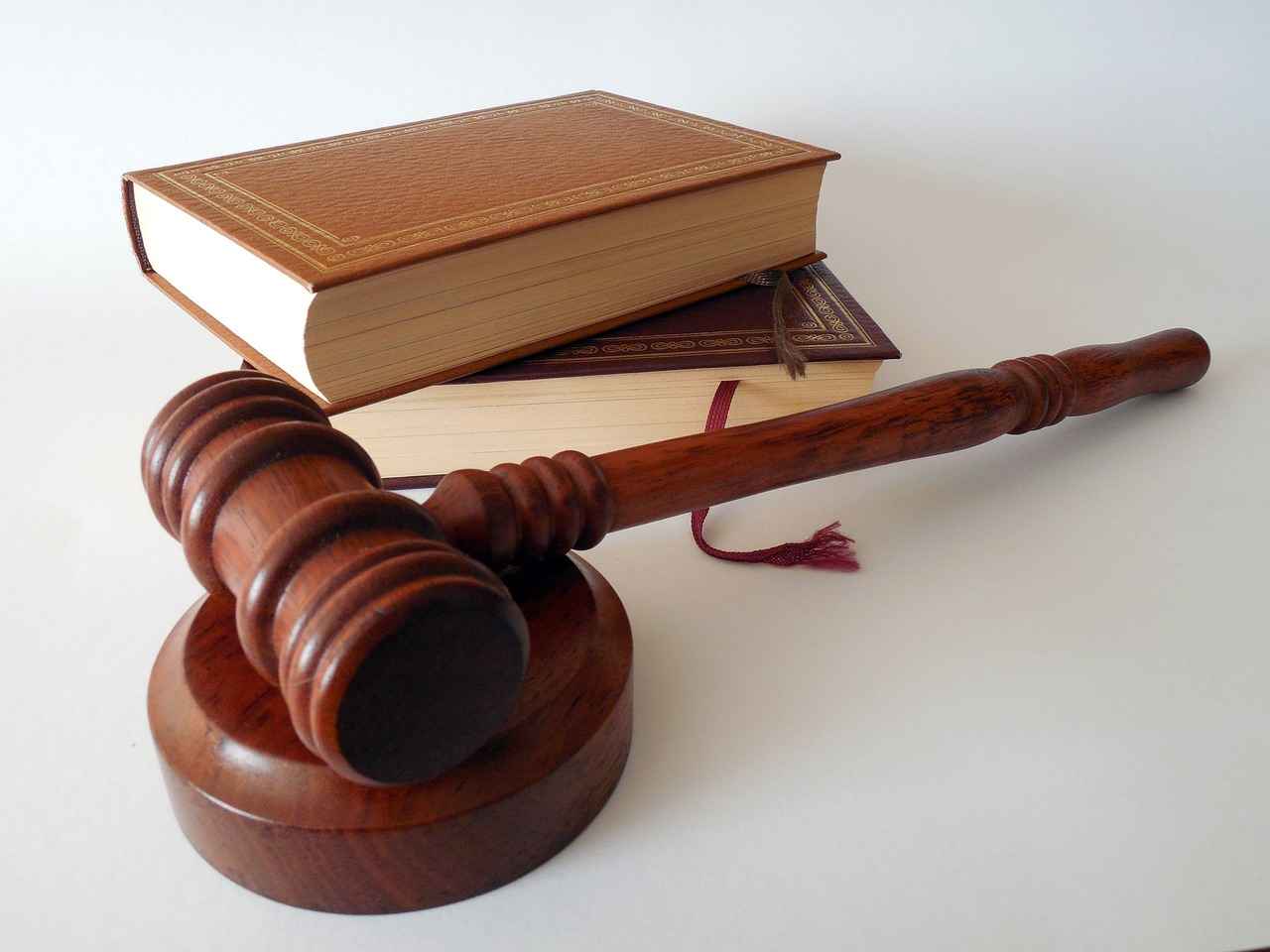
What to Expect on Auction Day?
When it comes to selling jewelry at auction, understanding the auction day process is crucial for a positive experience. By familiarizing yourself with the various stages—from registration to the final sale—you can navigate the day with confidence and ease. This knowledge not only helps reduce anxiety but also maximizes your chances of achieving a successful sale.
Auction day can be both exciting and nerve-wracking. Here’s what you can expect:
- Registration: Before the auction begins, all participants must register. This process may involve providing identification and, in some cases, a credit card to secure bids.
- Previewing the Items: Most auction houses allow potential buyers to view the items before bidding starts. This is a crucial opportunity for you to showcase your jewelry and for bidders to inspect it closely.
- Bidding Process: The auctioneer will start the bidding at a predetermined price. Bidders will raise their paddles to place bids, and the auctioneer will call out the prices until no one is willing to bid higher.
- Final Sale: Once the bidding concludes, the highest bidder wins the piece. The auction house will then handle the payment and transfer of ownership.
Preparation is key to ensuring a smooth auction experience. Here are some tips:
- Know Your Jewelry: Familiarize yourself with the details of the pieces you are selling. This includes understanding their value, history, and unique features that could attract bidders.
- Arrive Early: On auction day, arrive early to ensure you have ample time to register and handle any last-minute details.
- Stay Calm and Engaged: While waiting for your items to be auctioned, remain calm. Engage with other participants and observe the bidding process to better understand the dynamics.
Once the auction is over, there are several important steps to follow:
- Payment Processing: The auction house will typically process payments within a few days. Be sure to understand their payment timeline and methods.
- Handling Unsold Items: If your jewelry does not sell, inquire about the auction house’s policy for unsold items. Some may allow you to re-list them in future auctions.
- Follow-Up Communication: Maintain communication with the auction house for updates on your sales and any potential buyers who may express interest in your unsold items.
Understanding the auction process is essential for several reasons:
- Confidence: Knowing what to expect helps reduce anxiety, allowing you to focus on presenting your jewelry effectively.
- Maximizing Sales: By being informed about the process, you can better strategize your approach to bidding and pricing, ultimately leading to higher sales.
- Networking Opportunities: Engaging with other sellers and buyers can open doors to future opportunities, making auction day not just about selling but also about building relationships.
In conclusion, being well-prepared for auction day can significantly enhance your experience and outcomes. By understanding the registration process, what to expect during bidding, and how to follow up after the auction, you can navigate the event confidently and effectively.
Registration and Bidding Procedures
When participating in an auction, particularly for selling jewelry, understanding the registration and bidding procedures is essential. This knowledge not only ensures a smooth experience but also reduces stress and maximizes your chances of success. Here’s a detailed look at what you need to know.
Registration is the first step in the auction process. It involves creating an account with the auction house, which allows you to place bids and track your items. This process typically requires you to provide personal information and may involve:
- Providing identification (such as a driver’s license or passport)
- Agreeing to the auction house’s terms and conditions
- Setting up a payment method for any potential purchases
Ensuring that your registration is completed well in advance of the auction day can help prevent any last-minute issues.
Once registered, you need to familiarize yourself with the bidding procedures. Auctions can operate in various formats, including live, online, or silent auctions. Each format has its own rules:
- Live Auctions: Bidders raise their paddles to indicate interest. Understanding the auctioneer’s pace and style is crucial.
- Online Auctions: Bids are placed through a website. It’s important to monitor your items closely as the auction progresses.
- Silent Auctions: Bidders write their bids on a sheet. Be aware of the closing time as late entries may not be accepted.
To enhance your auction experience, consider the following tips:
- Know the Auction Schedule: Be aware of the start and end times of the auction. This knowledge allows you to plan your bidding strategy effectively.
- Set a Budget: Determine how much you are willing to spend beforehand to avoid impulsive bidding.
- Research Items: Familiarize yourself with the jewelry pieces you are interested in. Understand their market value to make informed bids.
After the auction, successful bidders will need to follow specific procedures regarding payment and item collection:
- Payment: Understand the payment methods accepted by the auction house and ensure timely payment to avoid penalties.
- Item Collection: Know how and when you can collect your purchased items. Some auction houses may offer shipping options.
By familiarizing yourself with these , you can navigate the auction landscape with confidence. This preparation not only alleviates stress but also enhances your overall experience, leading to a successful jewelry sale.
Post-Auction Sales and Payments
Understanding the intricacies of post-auction sales and payments is essential for anyone looking to sell jewelry at auction. This knowledge not only helps in managing expectations but also plays a crucial role in planning for future sales.
Once the auction concludes, the next step involves payment processing. Typically, auction houses have specific timelines for processing payments, which can vary from a few days to several weeks. It’s vital to familiarize yourself with these timelines to avoid any surprises. Most auction houses will send you a detailed statement outlining the final sale price of your items, any applicable fees, and the net amount you will receive.
In addition to payment timelines, understanding the commission structure is equally important. Auction houses usually charge a consignment fee or a percentage of the sale price as commission. This fee can significantly impact your overall profit, so be sure to clarify these details before the auction. Knowing the exact percentage will help you set realistic expectations regarding your earnings.
Moreover, it’s crucial to be aware of the auction house’s policies regarding unsold items. If your jewelry does not sell, you may have several options. Some auction houses may offer to relist your items in future auctions, while others may require you to pick them up. Understanding these policies beforehand can help you plan your next steps effectively.
Additionally, consider the potential for post-auction negotiations. If an item does not meet its reserve price or fails to attract bids, you might have the opportunity to negotiate a sale with interested parties after the auction. This can be particularly beneficial for unique or valuable pieces that may not have received the attention they deserve during the auction.
To ensure a smooth process, maintain open communication with the auction house. If you have any questions regarding your payment or the status of unsold items, do not hesitate to reach out. Establishing a good relationship with the auction house can also provide insights into future auction strategies and trends.
In summary, being well-informed about the payment processes and policies regarding unsold items can significantly enhance your experience when selling jewelry at auction. By managing your expectations and planning accordingly, you can set yourself up for success in future sales.
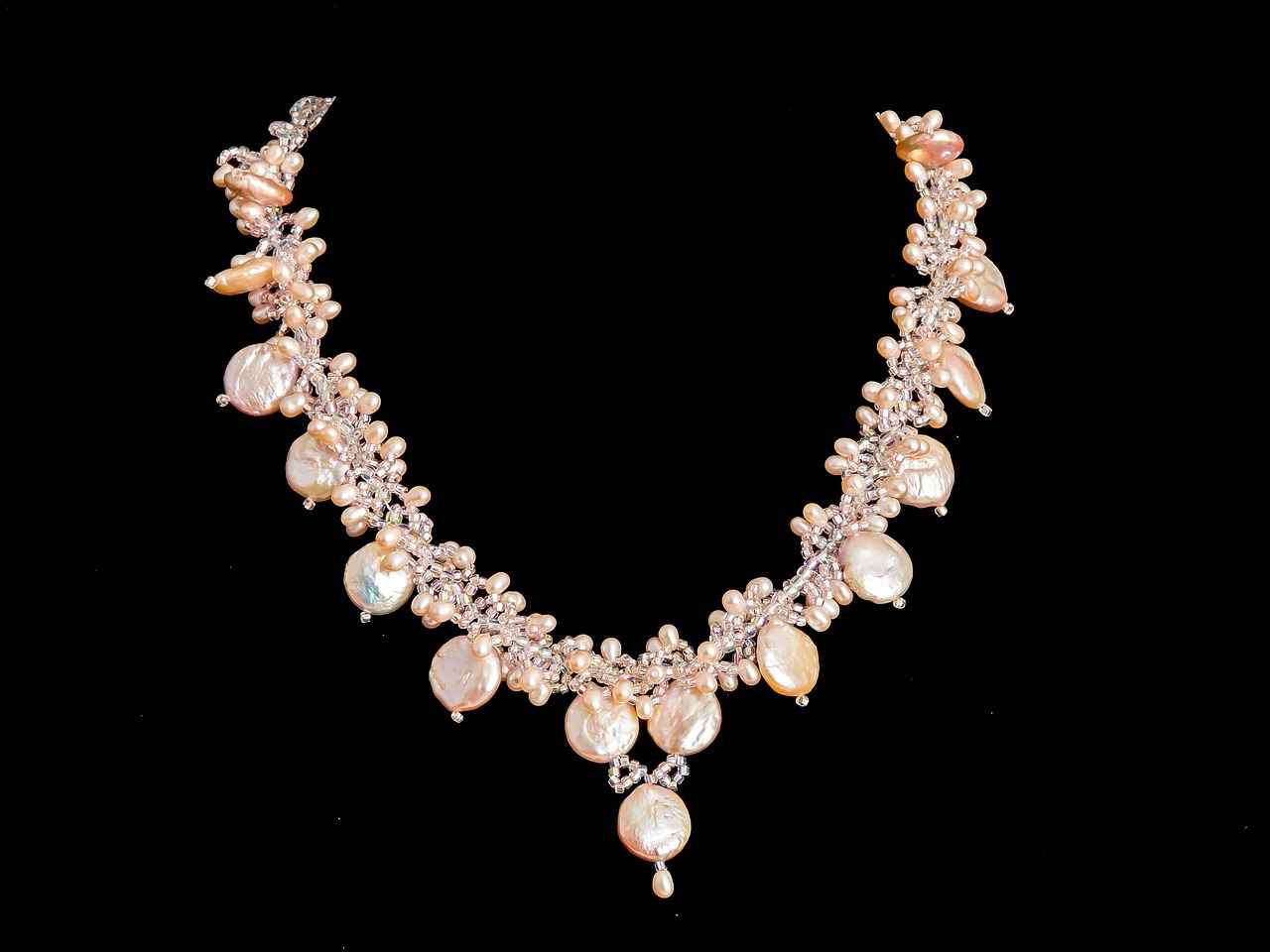
Common Mistakes to Avoid When Selling Jewelry at Auction
When venturing into the world of jewelry auctions, understanding the landscape is crucial. Many sellers, eager to part with their pieces, often overlook important details that can lead to significant financial repercussions. Being aware of common pitfalls can help you avoid costly mistakes and ensure a smoother selling experience. Here are some key mistakes to watch out for:
One of the most common mistakes is underestimating the value of your jewelry. Many sellers may not realize the true worth of their items, especially if they are unaware of current market trends. It is essential to conduct thorough research or consult with a professional appraiser to determine a realistic value. This will not only help in setting a proper reserve price but also ensure you don’t lose out on potential profits.
Choosing the right auction house is critical. Neglecting to research auction houses can lead to poor outcomes. Each auction house has its own audience, commission rates, and reputation. Take the time to evaluate multiple options and select one that specializes in jewelry and has a strong track record. This can significantly impact the visibility and final sale price of your items.
Another common mistake is failing to prepare your jewelry adequately for auction. This includes cleaning, repairing, and documenting your pieces. Jewelry that appears well-maintained is more likely to attract bidders. Consider investing in professional cleaning services to enhance the appearance of your items, making them more appealing to potential buyers.
Setting a reserve price that is too low can lead to disappointment if your jewelry sells for less than its worth. Conversely, setting it too high may deter bidders. Understanding how to establish a realistic reserve price based on market research and appraisal insights is vital for a successful auction experience.
Effective marketing is key to attracting bidders. Ignoring marketing opportunities can limit your audience significantly. Utilize social media platforms, create engaging content, and highlight the unique features of your jewelry. Well-crafted descriptions can capture the essence of your pieces and draw in potential buyers.
Each auction house has specific policies regarding fees, payment timelines, and unsold items. Not understanding these policies can lead to unpleasant surprises post-auction. Familiarize yourself with the terms and conditions to manage your expectations effectively and avoid unnecessary complications.
Timing can greatly influence the success of your auction. Overlooking the importance of timing may result in your jewelry being sold during a less favorable market period. Stay informed about market trends and consider seasonal factors that may affect buyer interest.
Lastly, failing to engage with potential buyers can diminish your chances of a successful sale. Be prepared to answer questions and provide additional information about your jewelry. Engaging with bidders can create a sense of trust and increase the likelihood of a sale.
By being aware of these common mistakes and taking proactive steps to avoid them, you can significantly enhance your chances of a successful jewelry auction. Proper preparation, research, and engagement are key components that will lead to a smoother and more profitable selling experience.
Underestimating Jewelry Value
When it comes to selling jewelry at auction, one of the most critical mistakes that sellers can make is underestimating the true value of their pieces. This error can lead to significant financial losses and missed opportunities. Understanding the value of your jewelry is essential for a successful sale, and there are several factors to consider.
Jewelry is not just a decorative item; it often carries sentimental value and can represent significant financial investment. By failing to accurately assess the worth of your jewelry, you run the risk of setting a price that is too low, ultimately leading to:
- Financial Loss: Selling below market value can mean losing out on thousands of dollars.
- Missed Opportunities: Potential buyers may perceive undervalued pieces as less desirable.
- Damaged Reputation: Consistently low pricing can harm your credibility as a seller.
Several elements contribute to the overall value of jewelry, including:
- Material Quality: The type of metal (gold, silver, platinum) and gemstones (diamonds, sapphires, etc.) significantly impact value.
- Craftsmanship: Unique designs and the skill involved in creating the piece can enhance its worth.
- Brand Reputation: Jewelry from well-known designers or brands tends to fetch higher prices.
- Market Demand: Trends in the jewelry market can fluctuate, affecting how much buyers are willing to pay.
To avoid underpricing your jewelry, consider taking the following steps:
- Get a Professional Appraisal: Hiring a qualified appraiser can provide an accurate valuation based on current market trends.
- Research Comparable Sales: Look at recent auction results for similar pieces to gauge potential selling prices.
- Consult Experts: Speak with jewelers or auction house professionals who can offer insights into your jewelry’s value.
Once you have a better understanding of your jewelry’s value, setting the right price for auction becomes crucial. Consider the following:
- Reserve Price: Establishing a reserve price can protect you from selling for less than you are comfortable with.
- Starting Bid: A competitive starting bid can attract more bidders and potentially lead to a bidding war.
- Market Timing: Selling during peak seasons or events can lead to higher bids.
In conclusion, accurately assessing the value of your jewelry is paramount to achieving a successful sale at auction. By understanding the factors that influence value, seeking professional appraisals, and setting appropriate prices, you can maximize your return and avoid the pitfalls of underpricing. Remember, knowledge is power in the world of jewelry sales, and taking the time to educate yourself can lead to rewarding outcomes.
Neglecting to Research Auction Houses
When it comes to selling jewelry at auction, thorough research on auction houses is not just important; it is essential. The auction house you choose can significantly influence the outcome of your sale. Without proper investigation, you risk encountering various pitfalls that could diminish your profits or even prevent a sale altogether.
One of the first steps in this research process is to examine the reputation of the auction house. Look for reviews and testimonials from previous sellers. Are they known for successfully selling jewelry? What are their average selling prices? A well-regarded auction house with a strong track record in jewelry sales can attract serious bidders who are willing to pay top dollar for your pieces.
Additionally, consider the specialization of the auction house. Some houses focus on fine art, while others may specialize in jewelry or antiques. Choosing a venue that has a dedicated jewelry department can enhance your chances of reaching the right audience. An auction house with expertise in your specific type of jewelry will have a better understanding of its value and appeal, leading to a more successful sale.
Another critical factor to investigate is the commission rates and fees associated with selling your jewelry. Different auction houses have varying fee structures, which can eat into your profits. Make sure to read the fine print and understand all costs involved, such as listing fees, seller’s premiums, and any additional charges for marketing your jewelry. This knowledge will help you calculate your potential earnings accurately.
Furthermore, familiarize yourself with the auction house’s policies on unsold items and payment timelines. Knowing what happens if your jewelry does not sell can help you make informed decisions. Some auction houses may offer to re-list unsold items in future auctions, while others may return them to you immediately. Understanding these policies can prevent misunderstandings and help you manage your expectations effectively.
Lastly, consider the marketing strategies employed by the auction house. A well-marketed auction can draw in a larger audience, increasing competition and driving up bids. Research how they promote their auctions—through social media, email newsletters, or partnerships with influencers. The more visibility your jewelry has, the better your chances of achieving a successful sale.
In summary, neglecting to research auction houses can lead to missed opportunities and disappointing outcomes. By taking the time to investigate the reputation, specialization, fees, policies, and marketing strategies of potential auction houses, you can make a more informed decision that maximizes your sale potential and ensures a successful auction experience.
Frequently Asked Questions
- What should I do before selling my jewelry at auction?
Before selling, ensure your jewelry is clean and well-presented. Consider getting a professional appraisal to understand its value, which will help you set realistic expectations and reserve prices.
- How do I choose the right auction house?
Look for an auction house with a strong reputation in jewelry sales. Check their commission rates and read reviews to ensure they align with your needs. A good auction house can significantly impact the visibility and final price of your jewelry.
- What types of jewelry are most successful at auction?
Vintage and antique jewelry often attracts high bids due to their rarity and appeal to collectors. Contemporary designer pieces also perform well, especially those from well-known brands. Understanding market trends can help you decide what to sell.
- How can I market my jewelry before the auction?
Utilize social media platforms to showcase your pieces and generate interest. Create compelling descriptions that highlight the unique features and history of your jewelry to engage potential bidders effectively.
- What happens if my jewelry doesn’t sell at auction?
If your jewelry doesn’t sell, most auction houses will have policies in place. You might have the option to relist it in another auction or pick it up after the event. It’s important to clarify these details with the auction house beforehand.

